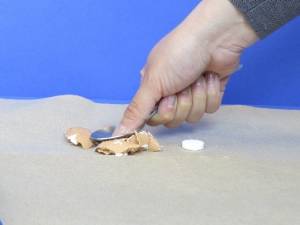
Incorporating Perlite into Soil for Enhanced Drainage and Aeration in Gardening and Plant Care
The Benefits of Adding Perlite to Soil for Optimal Plant Growth
Soil composition plays a crucial role in the health and growth of plants. One popular amendment that has gained considerable attention among gardeners and horticulturists alike is perlite. This lightweight, volcanic glass substance enhances soil aeration and drainage, making it an ideal additive for various growing mediums. In this article, we will explore the benefits of adding perlite to soil, as well as tips for its effective use.
What is Perlite?
Perlite is a naturally occurring volcanic glass that is expanded through a heating process, which causes the water trapped within to turn to steam and expand, resulting in small, white, lightweight granules. This unique structure provides perlite with numerous beneficial properties that can significantly improve soil quality.
Improved Aeration
One of the primary advantages of adding perlite to soil is its ability to improve aeration. Healthy plants require an adequate supply of oxygen to their root systems, and compacted soil can restrict airflow. By incorporating perlite, gardeners can create a loose soil structure that allows for better airflow around the roots. Plants with improved aeration can grow more robustly, as they can absorb nutrients and water more effectively.
Enhanced Drainage
Another critical benefit of perlite is its excellent drainage capabilities. Heavy soils, especially clay, can retain excessive moisture, leading to root rot and other detrimental issues. By mixing perlite into such soils, you can improve drainage, allowing excess water to flow away while retaining moisture levels that are conducive to healthy plant growth. This property makes perlite particularly valuable in container gardening, where adequate drainage can be a challenge.
Lightweight and Sterile
oem adding perlite to soil

Perlite is remarkably lightweight, which makes it an ideal component for potting mixes and when planting in containers. Its low density reduces the overall weight of potted plants, making them easier to move around without damaging the roots. Additionally, perlite is sterile and free from diseases and pests, making it a safe choice for planting. This can be especially beneficial for new plants, as it minimizes the risk of introducing pathogens that could harm young roots.
Versatility in Application
Perlite can be used in various gardening applications. It is an excellent addition to potting mixes, seed starting blends, and even as a top dressing for houseplants. It can also be effective in hydroponic systems, where it helps to provide a stable growing environment for roots. The versatility of perlite allows gardeners to customize their soil mixtures to meet the specific needs of their plants, whether they are growing succulents, vegetables, or ornamental flowers.
Tips for Using Perlite
1. Mixing Ratios When incorporating perlite into existing soil, a common ratio is one part perlite to three parts soil. However, this can vary depending on the specific needs of your plants and the texture of your existing soil.
2. Stay Consistent For best results, maintain consistent ratios in your potting mix or garden bed, ensuring that all plants receive the same beneficial properties that perlite provides.
3. Monitor Moisture Levels While perlite improves drainage, it’s also essential to monitor moisture levels since the increased aeration may cause the soil to dry out more quickly than before.
Conclusion
Adding perlite to soil is a simple yet effective way to enhance the growing conditions for plants. Its ability to improve aeration, provide excellent drainage, and maintain a lightweight, sterile profile makes it a valuable addition to any garden. Whether you're a novice gardener or a seasoned horticulturist, incorporating perlite into your soil can lead to healthier plants and a more productive garden overall.
Share
-
Premium Pigment Supplier Custom Solutions & Bulk OrdersNewsMay.30,2025
-
Top China Slag Fly Ash Manufacturer OEM Factory SolutionsNewsMay.30,2025
-
Natural Lava Rock & Pumice for Landscaping Durable Volcanic SolutionsNewsMay.30,2025
-
Custom Micro Silica Fume Powder Manufacturers High-Purity SolutionsNewsMay.29,2025
-
Custom Mica Powder Pigment Manufacturers Vibrant Colors & Bulk OrdersNewsMay.29,2025
-
Custom Micro Silica Fume Powder Manufacturers Premium QualityNewsMay.29,2025






